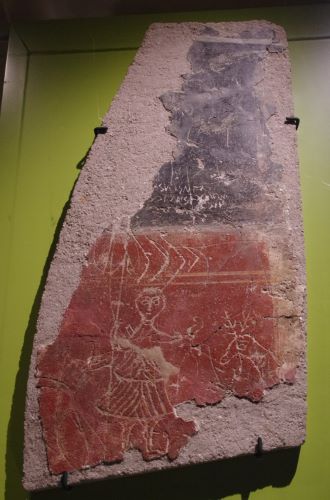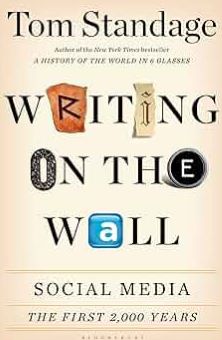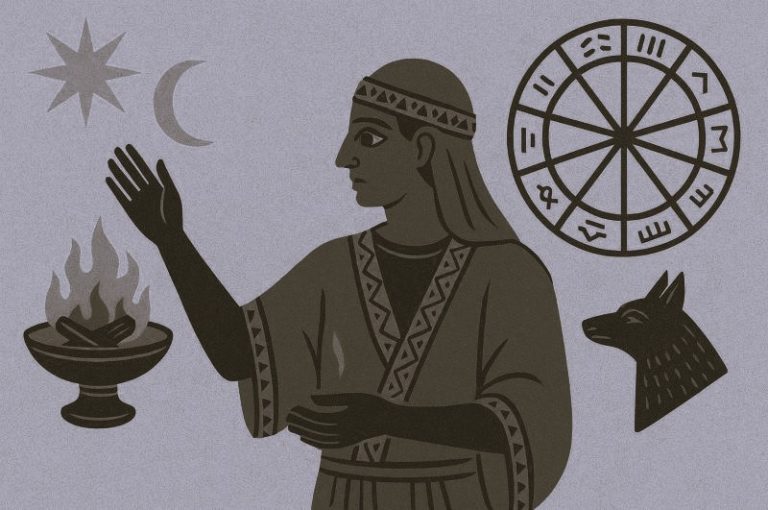

An informal system enabled information to reach the farthest corners of the Roman world within a few weeks.

By Tom Standage
Author and Journalist
Who invented social media? It wasn’t the founders of Facebook, or Twitter, or even MySpace or Friendster. Social media—the exchange of media within networks of friends and acquaintances—is much older than the Internet. A social-media environment requires two things: a certain level of literacy, and the ability to copy and deliver information cheaply and quickly. This combination first arose in the late Roman republic of the 1st century BC, more than 2,000 years ago.
At the time there were no printing presses and no paper. Instead, information circulated among the intermarried families of the Roman elite through the exchange of papyrus rolls. The ruling class was well-educated and literate. And in place of broadband, which makes copying and sending information cheap and quick today, the Romans had scribes and messengers, many of whom were slaves.
The correspondence of the Roman statesman Marcus Tullius Cicero, the best preserved collection of letters from the period, shows that he and his friends wrote to each other constantly, recounting the latest political machinations, passing on items of interest from others and providing commentary and opinion. “I sent you on March 24th a copy of Balbus’ letter to me and of Caesar’s letter to him,” Cicero wrote to a friend in one typical example. Caesar’s missive was, in other words, sent to Balbus and then copied to Cicero, who recopied it in turn.
Letters were commonly shared and quoted in other letters. Some were addressed to several people and were intended to be read aloud, or posted in public. Similarly, when Cicero or another politician made a noteworthy speech, he would distribute it by making copies available to his associates, who would read it and pass it on to others. Many more people might then read the speech than had heard it being delivered in person.

Books circulated in the same way, as sets of papyrus rolls passed from one reader to the next. Anyone who wished to keep a copy of a speech or book would have it copied by scribes before passing it on. People in Rome also sent their friends excerpts from the acta diurna, or state gazette. It was posted in the Forum each day and contained official announcements and summaries of political debates.
With information flitting from one person to another, this informal system enabled information to reach the farthest corners of the Roman world within a few weeks. News from Rome took around five weeks to reach Britain in the west and seven weeks to reach Syria in the east. Merchants, soldiers and officials in distant parts would circulate information from the heart of the republic within their own social circles, sharing extracts from letters, speeches or the state gazette with their friends and passing news and rumours from the frontier back to their contacts in Rome. This was a world in which people gathered, filtered and distributed information for their friends. It was, in short, a social-media system.
This is just one of many historical precursors of today’s social media. Other notable examples include the torrent of printed tracts which circulated in 16th-century Germany at the start of the Reformation; the stream of news-sheets that coursed through Enlightenment coffee-houses; the pamphlets and local papers that rallied support for American independence; and the handwritten poems and newsletters of pre-Revolutionary France, which spread rumour and gossip within Paris and beyond.
For most of history, in fact, media was social. The emergence of centralised mass media such as newspapers, radio and television is a very recent phenomenon, dating from the mid-1800s, and is arguably a historical anomaly. Although we think of it as quintessentially modern, social media has a surprisingly deep and rich history, dating all the way back to Caesar, Cicero and their contemporaries. History, it seems, retweets itself—and it all began with the Romans.
Originally published by The Wall Street Journal, 12.03.2013.


